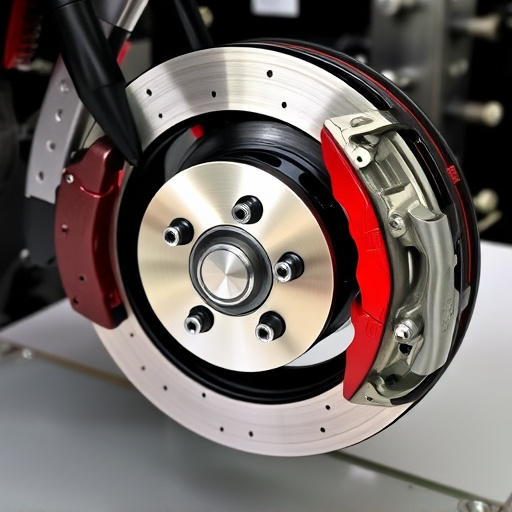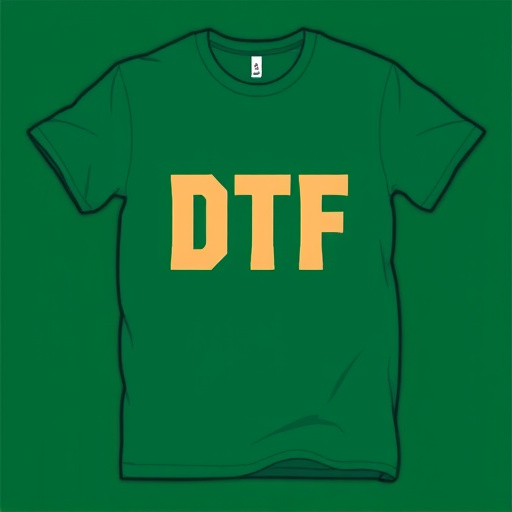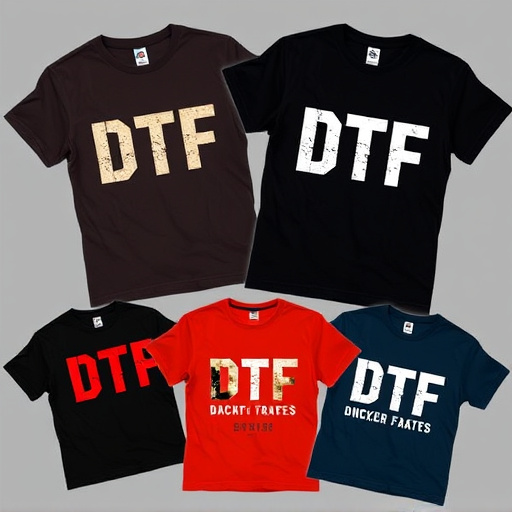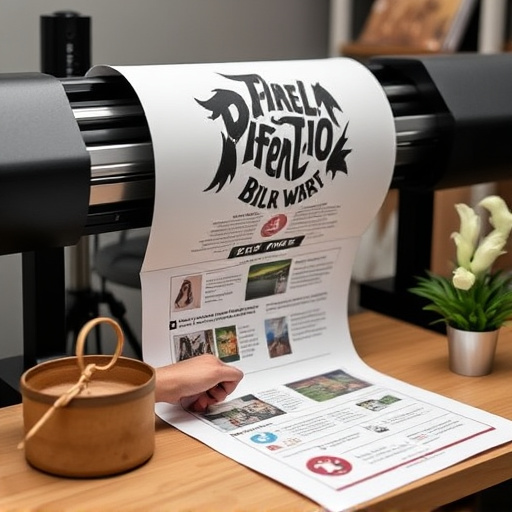Premium DTF Transfers utilize cutting-edge printing tech for precise, vibrant color reproduction on fabric, metal, and wood. Embracing sustainability with eco-friendly materials and advanced machines reduces waste and emissions, meeting high-quality standards while appealing to environmentally conscious consumers. This growing trend drives cost savings and ecological responsibility in production, promising bright future prospects through technological advancements.
In an era where sustainability is paramount, the production of Premium DTF Transfers (Direct-To-Final) is undergoing a green revolution. This article explores the intersection of high-quality printing and eco-conscious practices, focusing on key strategies that make Premium DTF Transfers more sustainable. We delve into the benefits for both manufacturers and consumers, and look ahead to the future of environmentally friendly DTF transfers, setting the stage for a greener print industry.
- Understanding Premium DTF Transfers: The Basics
- Sustainability Practices in Production: Key Strategies
- Benefits and Future of Green DTF Transfers
Understanding Premium DTF Transfers: The Basics
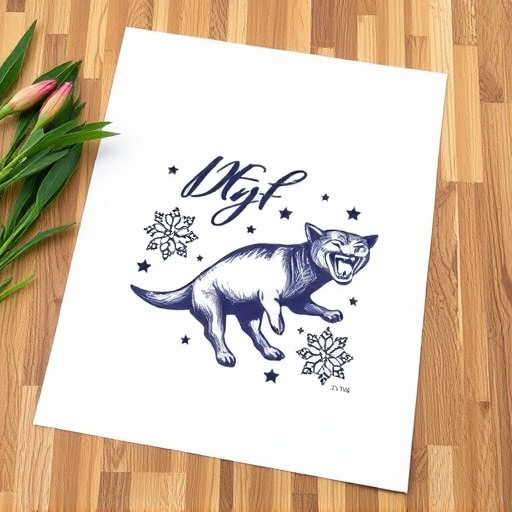
Premium DTF Transfers, or Direct to Film Transfers, represent a cutting-edge printing technology revolutionizing various industries, from apparel to signage. This method involves directly applying inks onto a film, which is then used to transfer intricate designs and graphics onto diverse materials like fabric, metal, or wood. The process offers unparalleled precision, color vibrancy, and speed, making it a preferred choice for high-quality, custom printing projects.
DTF prints stand out due to their ability to reproduce complex art, photos, and vector graphics with remarkable detail. A direct to film printer enables the creation of durable, long-lasting impressions suitable for both indoor and outdoor applications. Moreover, this technology minimizes waste by precisely metering inks, contributing to a more sustainable production process—a significant advantage in today’s eco-conscious market.
Sustainability Practices in Production: Key Strategies
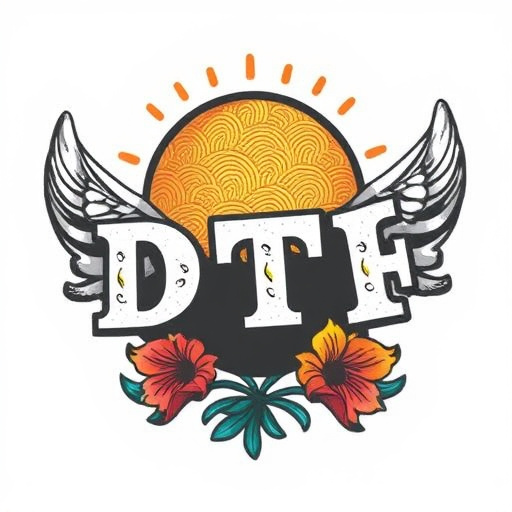
In the realm of premium DTF transfers, sustainability is no longer an optional consideration but a core strategy for responsible manufacturing. Key practices include embracing eco-friendly materials and inks, which significantly reduce environmental impact. For instance, using water-based or solvent-free inks minimizes toxic emissions, ensuring safer working conditions and a cleaner environment. Additionally, these inks offer vibrant colors that rival traditional methods, catering to the high-quality expectations of premium DTF transfers.
Another vital strategy is implementing efficient production processes that minimize waste. Advanced machines and techniques allow for precise cutting and printing, reducing scrap material. Moreover, brands can optimize their DTF printing for dark fabrics by strategically choosing transfer papers designed to yield consistent results on various fabric types, thereby decreasing the need for multiple batches. For large-scale operations, focusing on bulk DTF shirt production with a sustainable twist involves leveraging digital technologies to streamline ordering and reduce overproduction, aligning perfectly with the eco-conscious consumer’s demands.
Benefits and Future of Green DTF Transfers
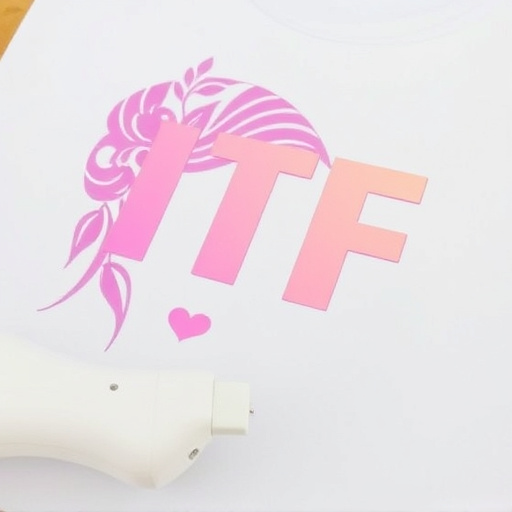
The adoption of green practices in Premium DTF Transfers production is a growing trend, offering numerous benefits to both manufacturers and consumers. By embracing sustainable methods, businesses can reduce their environmental footprint while creating high-quality products. One of the key advantages is the potential for cost savings; eco-friendly materials and processes often lead to lower production costs over time, making green DTF Transfers a financially viable option.
Looking ahead, the future of Green DTF Transfers seems promising. With increasing consumer awareness about environmental issues, there is a growing demand for eco-conscious products. This shift in preference presents an opportunity for manufacturers to differentiate their brands and appeal to a wider audience. Moreover, advancements in technology are making sustainable production more efficient and accessible, ensuring that the future of Premium DTF Transfers can be both profitable and environmentally responsible.
In conclusion, the adoption of sustainable practices within the production of Premium DTF Transfers is not only an ethical imperative but also a strategic business decision. By implementing key strategies like eco-friendly materials, efficient processes, and closed-loop recycling, manufacturers can significantly reduce their environmental impact while maintaining high-quality standards. The benefits extend to both the industry and consumers, with green DTF transfers promising a brighter, more sustainable future for this technology. As awareness and demand grow, the premium DTF market is poised to lead the way in eco-conscious innovations, ensuring a greener landscape for all.




